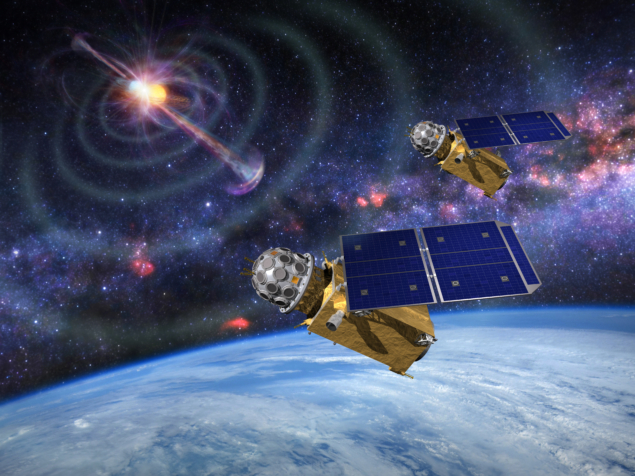China has successfully launched a space telescope to study some of the most energetic events in the Universe. Lifting off in December 10th 2020 from the Xichang Satellite Launch Center, the Gravitational wave high-energy Electromagnetic Counterpart All-sky Monitor (GECAM, also called Huairou-1) represents one of the first new “all-sky” devices that will focus on detecting electromagnetic counterparts of gravitational waves. In addition to signals from GWs, the observatory studies Ultra-long GRBs, X-ray Flashes, X-ray-rich GRBs, Magnetars and Terrestrial Gamma-ray Flashes.

The craft is set to begin operations as soon as it enters orbit, doing so for three years. GECAM’s two satellites are the country’s first for monitoring gravitational wave electromagnetic counterparts. GECAM is composed of a constellation of two X-ray and gamma-ray all-sky observing small satellites, called GECAM A and GECAM B, for research in electromagnetic counterparts of gravitational waves (Gws).
Gravitational waves from the merger of two black holes were first detected on Sept. 14, 2015. This discovery ushered in the era of gravitational wave astronomy. Two years later, detection of a high energy signal from the electromagnetic counterpart of a gravitational wave provided a comprehensive understanding of gravitational waves. However, high energy radiation from gravitational wave events is fleeting and difficult to capture, making it important to monitor such wave events with high sensitivity in an all-sky field of view.

In March 2016, the Institute of High Energy Physics, Chinese Academy of Sciences, proposed the concept of the GECAM project, which consists of two microsatellites orbiting at an altitude of 600 km. The satellites will monitor high energy bursts with an all-sky field of view and high sensitivity.
GECAM is expected to discover the largest sample of gravitational wave gamma ray bursts of any previous international satellites. It will also explore the causes of fast radio bursts, discover a number of special gamma ray bursts and monitor the complete burst process of magnetars. The launch of GECAM will contribute to the study of the formation and evolution of compact objects such as black holes and neutron stars, as well as the mysteries of binary compact star mergers. In addition, GECAM will detect solar flares, terrestrial gamma ray flashes and terrestrial electron beams, as well as further investigate their physical mechanisms.
